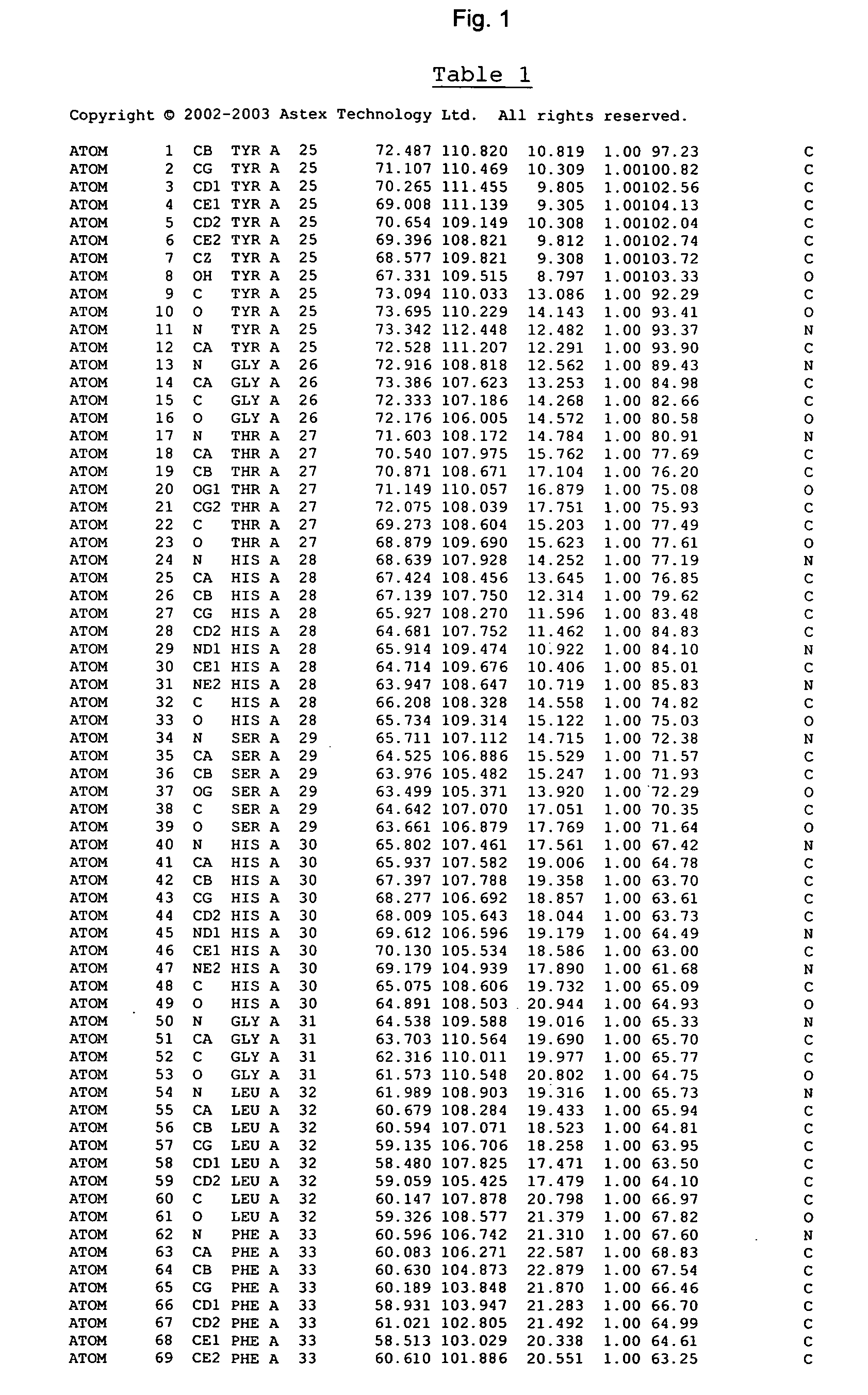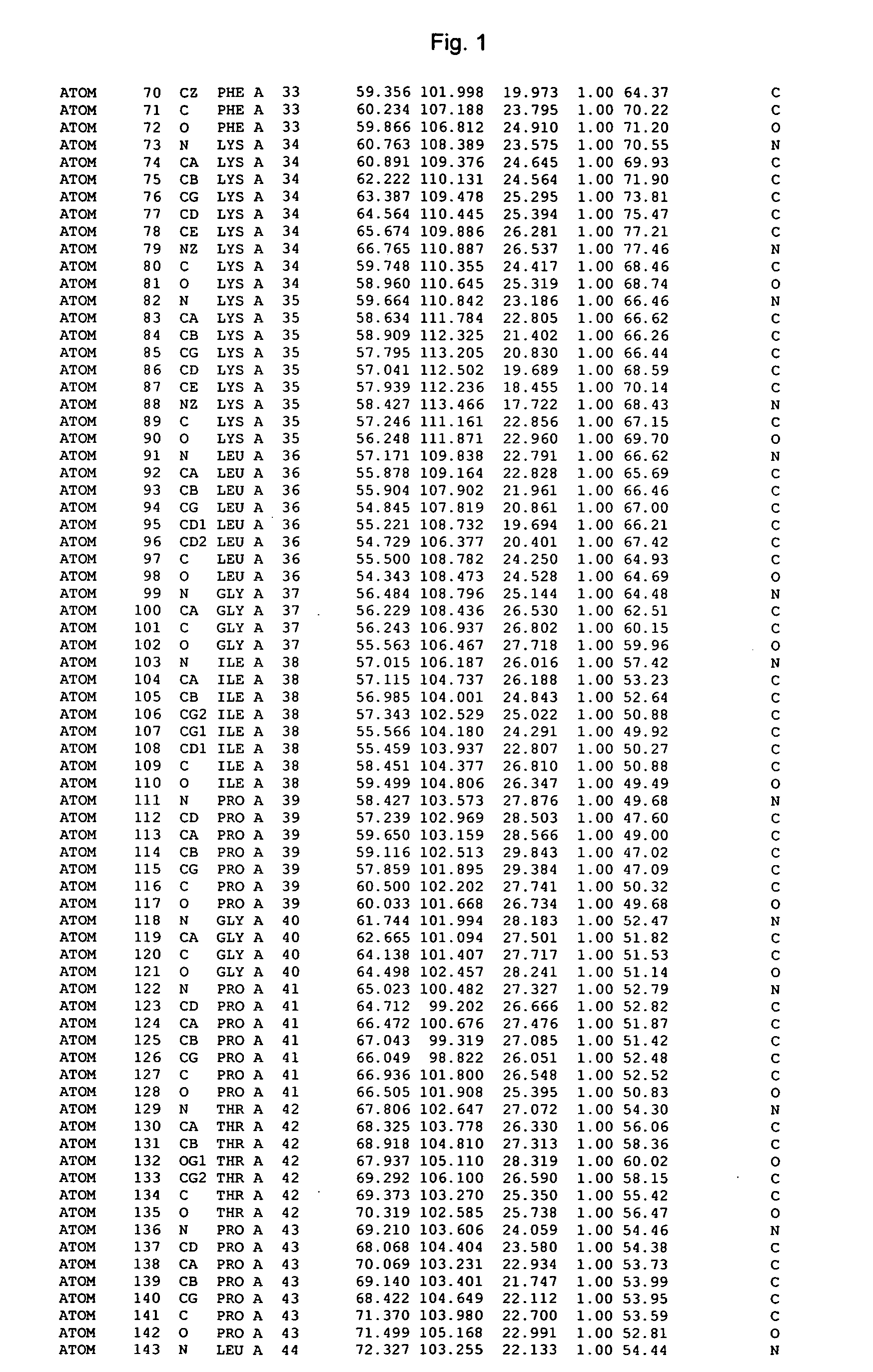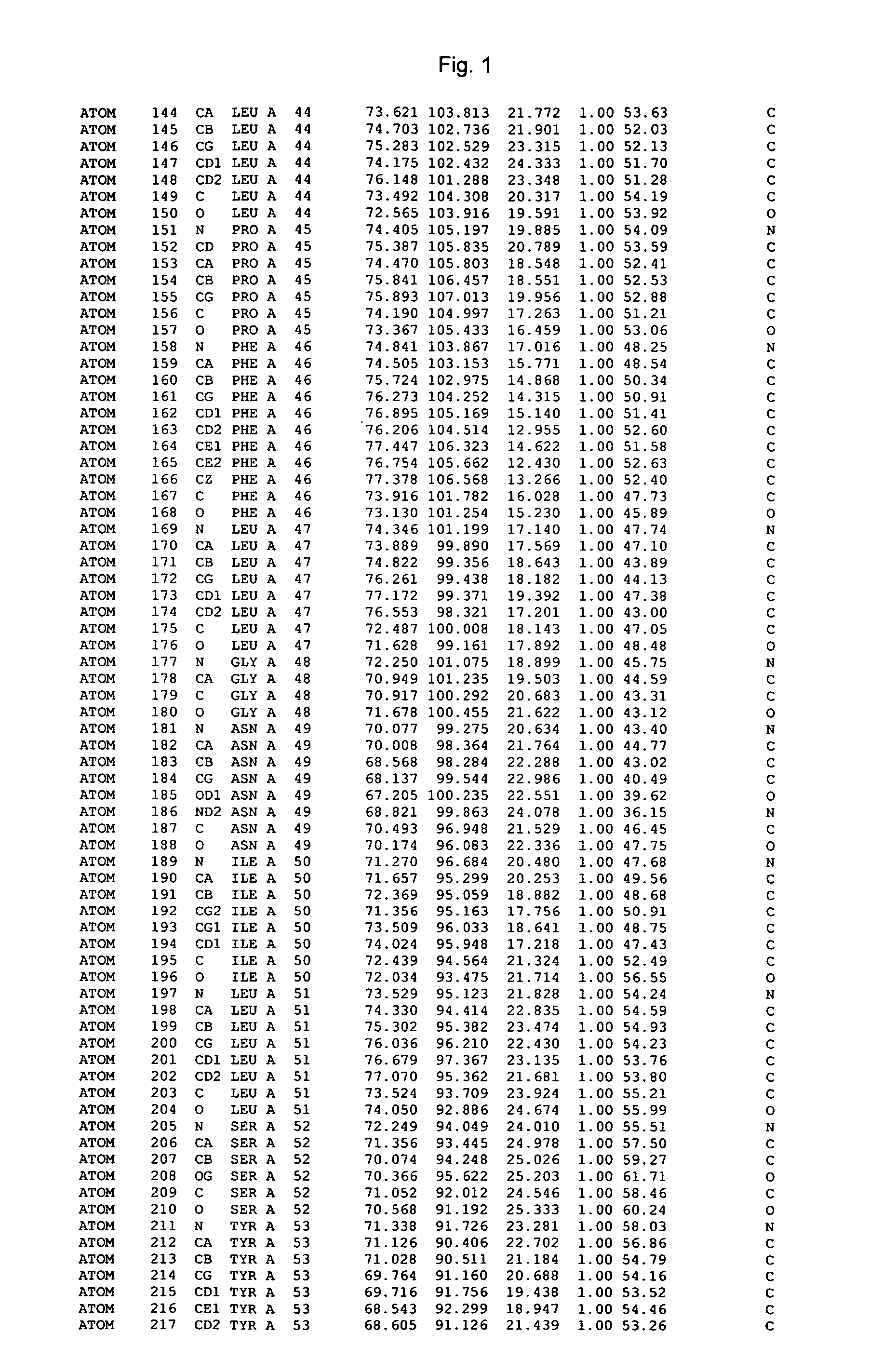Crystal structure of cytochrome P450
a crystal structure and cytochrome technology, applied in the field of crystal structure of cytochrome p450, can solve the problems of chancy and difficult process of crystallising a protein, major obstacle in the process of crystallizing protein molecules from solution, and serious clinical consequences of interactions
- Summary
- Abstract
- Description
- Claims
- Application Information
AI Technical Summary
Problems solved by technology
Method used
Image
Examples
Embodiment Construction
[0335] Cloning of 3A4
[0336] 3A4 corresponding to M18907 (GI.sub.--181373) was cloned from human liver library (Origene Technologies, Inc.).
[0337] PCR carried out as recommended by the manufacturer:
3 Liver library 2.0 .mu.l 10 .times. PCR buffer (-Mg.sup.2+) 2.5 .mu.l 10 mM dNTPs 0.5 .mu.l 10 mM MgSO.sub.4 2.5 .mu.l Water 11.0 .mu.l Primer 1 (@10 pmol / .mu.l) 3.0 .mu.l Primer 2 (@10 pmol / .mu.l) 3.0 .mu.l
[0338] Primer 1 is complementary to the 5' end of the full length 3A4 cDNA. Primer 2 is complementary to the 3' end of the cDNA and adds a four histidine tag onto the C-terminus of the 3A4 protein.
[0339] Heat to 94.degree. C., add 0.5 .mu.l (1 Unit) Vent polymerase
[0340] 35 cycles as follows:
4 94.degree. C. 30 seconds 65.degree. C. 60 seconds 72.degree. C. 60 seconds 1 cycle of 72.degree. C. for 5 minutes.
[0341] Following the addition of 1 .mu.l (2.5 Units) Taq polymerase and incubation at 72.degree. C. for 10 minutes, 1 .mu.l of product was used in a TOPO cloning reaction (vector pCR4...
PUM
| Property | Measurement | Unit |
|---|---|---|
| Fraction | aaaaa | aaaaa |
| Angle | aaaaa | aaaaa |
| Structure | aaaaa | aaaaa |
Abstract
Description
Claims
Application Information
 Login to View More
Login to View More - R&D
- Intellectual Property
- Life Sciences
- Materials
- Tech Scout
- Unparalleled Data Quality
- Higher Quality Content
- 60% Fewer Hallucinations
Browse by: Latest US Patents, China's latest patents, Technical Efficacy Thesaurus, Application Domain, Technology Topic, Popular Technical Reports.
© 2025 PatSnap. All rights reserved.Legal|Privacy policy|Modern Slavery Act Transparency Statement|Sitemap|About US| Contact US: help@patsnap.com



